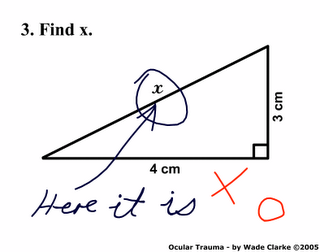Innovation, productivity, learning
The concept of innovation means very different things to different people. It may be useful to set some common ground by summarizing some of the definitions and research findings in the classical book Diffusion of Innovations, by Everett M. Rogers.
An innovation is an idea, practice, or object that is perceived as new by an individual. It matters little, so far as human behavior is concerned, whether or not an idea is "objectively" new as measured by the lapse of time since its first use or discovery. The perceived newness of the idea for the individual determines his or her reaction to it. If an idea seems new to the individual, it is an innovation.
It should not be assumed that the diffusion and adoption of all innovations are necessarily desirable. Some harmful and uneconomical innovations are not desirable for either an individual or a social system. Further, the same innovation may be desirable for one adopter in one situation but undesirable for other potential adopter whose situation differs.
Five characteristics of an innovation, as perceived by individuals, are specially important in explaining its rate of adoption:
- Relative advantge (the degree to which an innovation is perceived as better than the idea it supersedes. It may be measured in economic terms, but social prestige, convenience and satisfaction are also important factors).
- Compatibility (the degree to which an innovation is perceived as being consistent with the existing values, past experiences and needs of potential adopters).
- Complexity (the degree to which an innovation is perceived as difficult to understand and use).
- Trialability (the degree to which an innovation may be experimented with on a limited basis).
- Observability (the degree to which the results of an innovation are visible to others).
The innovation-decission process consists of a series of choices and actions over time through which an individual or social system evaluates a new idea an decides whether or not to incorporate the innovation into ongoing practice. During this process, different information-seeking and information-processing activities take place This process can be conceptualized in five steps:
- Knowledge occurs when an individual is exposed to an innovation's existence and gains understanding of how it functions.
- Persuasion occurs when an individual forms a favorable or unfavorable attitude towards the innovation.
- Decision takes place when an individual engages in activities that lead to a choice to adopt or reject the innovation.
- Implementation occurs when an individual puts a new idea into use.
- Comfirmation takes place when an individual seek reinforcement of an innovation-decision already made, but he may reverse this previous decision.
The previous summary contains some points that are relevant to any organization that wants to achieve higher productivity through innovation:
- innovation is not necesarilly good. The choice of a new technology because of its coolness or the implemenation of a redundant bureaucratic control are samples of the kind of innovation that an organization does not want. In the rest of this post, I'll use the term innovation only to refer to those new ideas that can lead to higher productivity, either directly (e.g. automating manual tasks) or indirectly (e.g. better organizational climate).
- perceived newness is a key component in the definition of innovation, although often overlooked: your obvious working pattern may be my innovation. We must understand that innovations that can lead to higher productivity are very diverse: from the latest Rational tool or a break through idea from a Research Lab, to a 30 year old programming principle or some simple recipe to manage effectively the email in-box. While few important innovations may lead to radical productivity improvements, we must not neglect the cumulative effect of dozens of smaller innovations that can lead to small increments in productivity.
- adoption of a new idea requires time and effort. Expecting the adoption of innovations without allocating time for the innovation-decision process is closer to wishful thinking than to a viable strategy.
Beyond the buzzword, innovation is about learning, setting the learning targets in those technologies, ideas and practices that can lead to a productivity improvement, and actively looking for opportunities to apply this learning and find new learning targets.
(This is a post from feb 2005 in my IBM internal blog; its leaving the firewall because I like it and it is relevant for an exchange I'm having with a non IBMer)



No hay comentarios:
Publicar un comentario